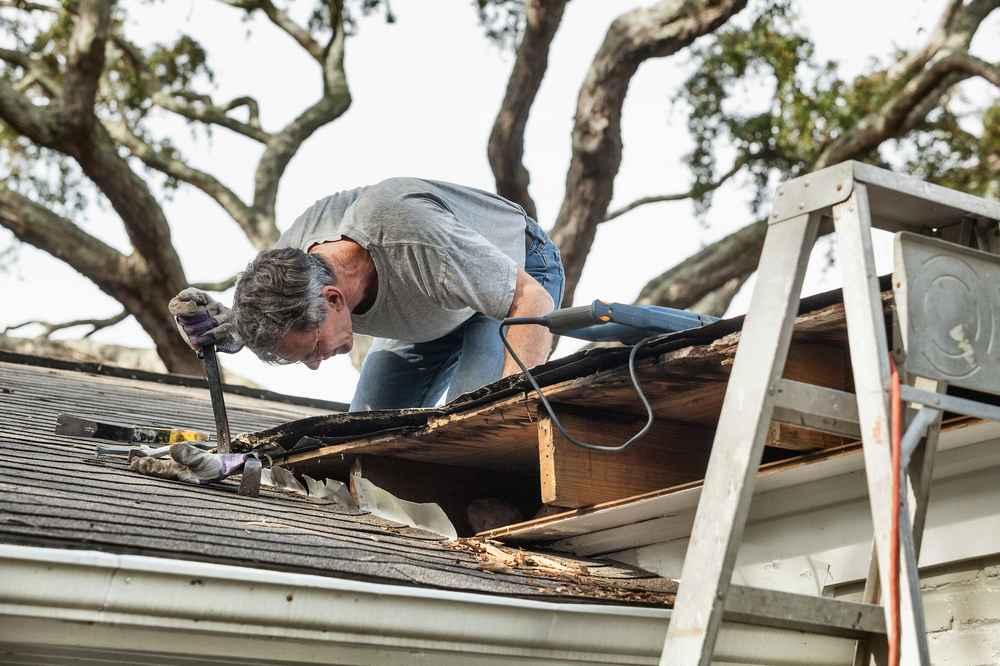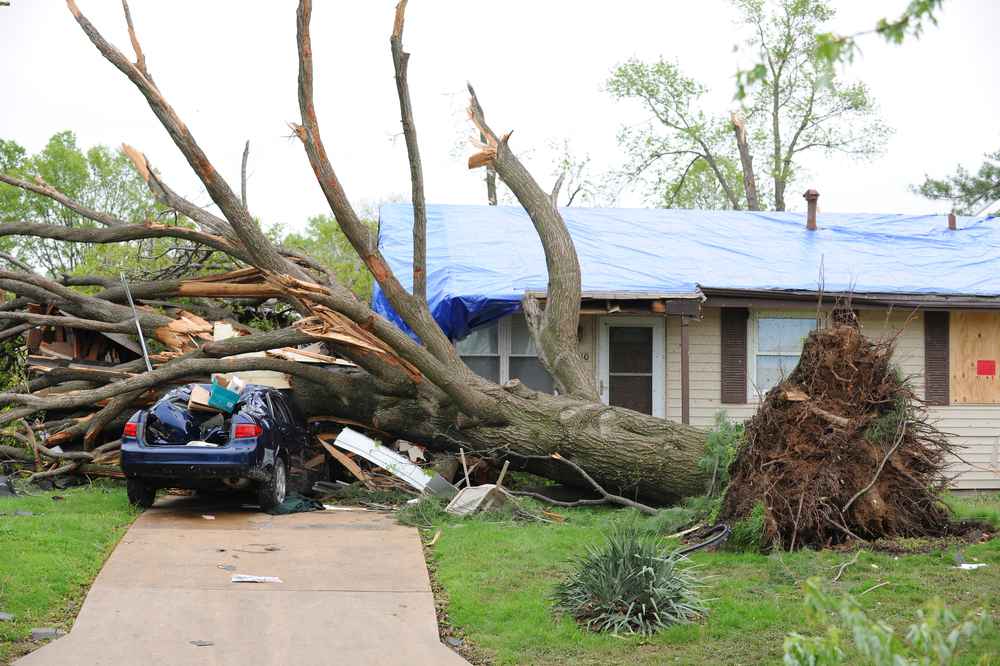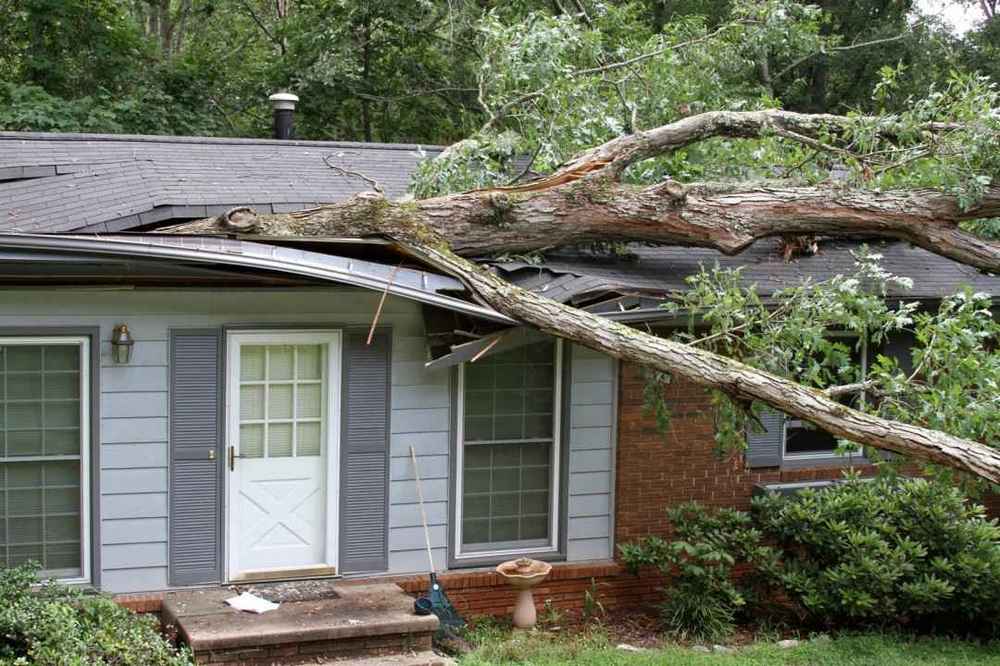Summer storms in the Quad Cities can roll in fast and leave just as quickly, often with plenty of damage in their wake. If your home took a hit during a recent storm, your roof may be bearing the brunt of it. Severe weather can cause everything from missing shingles to leaks, and taking quick action is critical to protect your property.
Let’s go through exactly what to do if a summer store damaged your roof, how to handle your insurance claim, and why choosing the right contractor for storm damage roof repair matters more than ever.

Step 1: Stay Safe and Assess from a Distance
Before anything else, your safety is the top priority. Avoid climbing onto your roof right after a storm, as it may be slippery or structurally compromised.
Instead, walk around your home from the ground and look for common signs of storm damage such as:
- Shingles that are missing, curled, or cracked
- Debris like tree branches or limbs on your roof
- Dented gutters or downspouts
- Water stains on interior ceilings or walls
- Flashing that looks pulled or bent
- Damage to vents, skylights, or chimneys
You may also be able to spot problems from upper-level windows. If you suspect more serious damage, it’s best to call in a professional for a full roof inspection.
Step 2: Document the Damage
One of the most important things you can do right after a storm is to document everything. Take clear photos or videos of the visible damage from as many angles as you safely can.
Be sure to include:
- Roof damage (shingles, flashing, vents)
- Any debris on the roof or property
- Water stains inside your home
- Damage to siding, windows, or gutters
This visual proof will be incredibly helpful when you seek roof insurance claims help from your provider. The more evidence you have, the stronger your claim will be.
Step 3: Prevent Further Damage
If there are visible holes or missing shingles, you’ll want to act fast to prevent additional water from getting into your home.
While you shouldn’t climb on the roof yourself, you can take steps like:
- Placing buckets or tarps under ceiling leaks
- Tarping exposed areas of your roof, if it can be done safely
- Moving valuables out of harm’s way
This is where having access to emergency roof service in the Quad Cities is invaluable. A qualified local roofing contractor can arrive quickly to provide temporary protection, preventing the situation from getting worse before repairs can begin.
Step 4: Contact a Trusted Roofing Contractor
Before contacting your insurance provider, it’s smart to call a local roofing company for a storm damage inspection. Why? Because roofers are trained to identify all types of damage, some of which insurance adjusters may overlook. Plus, many contractors are happy to meet with your adjuster and advocate on your behalf.
Look for a roofing contractor that offers:
- Free inspections
- Storm damage experience
- Emergency roof service in the Quad Cities
- Help with roof insurance claims
- Local references and strong warranties
Working with a roofer who understands both the technical side and the insurance process will save you time, stress, headaches, and potentially thousands of dollars.
Step 5: Call Your Insurance Company
Once you’ve had your roof inspected and have documentation in hand, contact your insurance provider to open a claim.
Your agent will guide you through their process, which usually includes:
- Scheduling a visit from an insurance adjuster
- Reviewing your policy to determine what’s covered
- Providing claim forms or paperwork to complete
Let your roofer know when the adjuster will visit. Many experienced roofers offer roof insurance claims help and will attend the appointment to ensure all damages are noted correctly.
Step 6: Understand Your Coverage: ACV vs. RCV
When dealing with storm damage, it’s critical to understand what type of homeowner’s policy you have. Most insurance plans fall into one of two categories.
Actual Cash Value (ACV)
This covers the depreciated value of your roof. That means the older your roof is, the less money you’ll get, even if you need a full replacement. You’ll need to pay the difference out of pocket.
Replacement Cost Value (RCV)
This covers the full cost of replacing your roof with materials of a similar kind and quality. Often, this is paid in two parts:
- The ACV portion upfront
- The remaining balance (recoverable depreciation) after the work is completed and documented
If you’re not sure which policy you have, your insurance provider or roofer can help you figure it out. A company that provides roof insurance claims help will also guide you through supplementing your claim if the insurer’s estimate is lower than the true cost of repairs.
Step 7: Schedule Permanent Repairs or Replacement
Once your claim is approved and you’ve chosen a trusted contractor, it’s time to schedule your roof work. Whether your roof needs a few repairs or a full replacement, make sure the project follows your insurance scope of work, meets local building codes, and uses high-quality materials.
In some cases, especially after a major storm, you may have to wait a few days or even weeks due to high demand. That’s why starting the process early is so important.
A good contractor will also:
- Take before-and-after photos
- Submit documentation for your final insurance payment
- Offer a workmanship warranty for peace of mind
If you need storm damage roof repair, don’t wait; delaying fixes can void future claims and leave your home vulnerable to leaks and mold.

Common Signs of Storm Damage to Watch For
Not all storm damage is obvious. Some of the most expensive problems start small and get worse over time.
Here are a few things that may indicate your roof was damaged, even if there’s no leak yet:
- Missing or lifted shingles
- Granule loss (bald spots on shingles)
- Dents in flashing or gutters
- Hail marks on shingles or siding
- Water spots on ceilings or walls
- Curling or cracked shingles
Any of these signs could mean your roof is compromised. A free inspection can confirm the extent of the damage and help you decide what to do next.
Avoid Storm Chasers and Out-of-Town Contractors
After big storms, it’s common for “storm chasers” to flood into the area, contractors who follow storm paths and offer cheap, quick repairs. While some may be legitimate, many are not.
Be cautious of roofers who:
- Demand full payment upfront
- Lack local references
- Can’t provide a license or insurance
- Use high-pressure sales tactics
Instead, choose a local company that offers emergency roof service in the Quad Cities, like Quality Construction Advantage Group, and stands by their work long after the storm is gone.
Need Help After a Storm? We’re Here for You
A summer storm can leave your roof vulnerable, but you don’t have to handle it alone. Our experienced team is here to provide trusted storm damage roof repair, fast emergency roof service in the Quad Cities, and expert roof insurance claims help every step of the way.
Let us inspect your roof, document the damage, and help you get the insurance coverage you deserve. We’ll restore your roof quickly and correctly, so you can get back to feeling safe at home.
Schedule your free inspection today and protect your home before the next storm hits.




